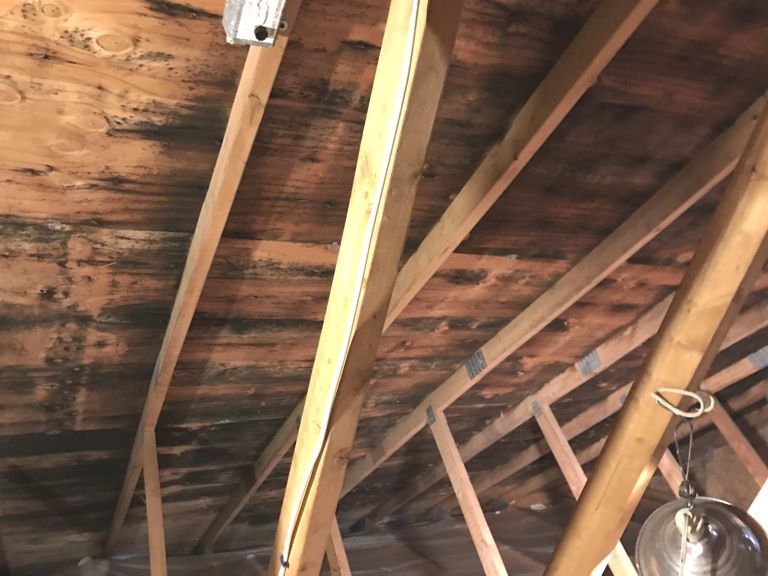
One of our nation’s leading insurance carriers recently required construction and engineering support that transcended the skills and scope of the everyday Property & Casualty adjuster. They turned to the forensic claims experts who lead the Property & Casualty Group at Guardian Group, Inc.
A residential policy holder had made a claim that damage to his roof and ceiling, including moisture intrusion and the melting of gutters and downspouts, was the result of a fire at his immediately adjacent neighbor’s house. The southern home, constructed in 1974, is constructed of concrete masonry unit block walls and reinforced concrete tie-beams. The sloped roof is supported by wood trusses with wood sheathing and is finished with three-tab composition asphalt shingles. For the home’s hot water supply, solar collector panels had been mounted directly to the roof support.
Rapidly deploying to the scene to investigate and definitively establish cause and origin of the moisture intrusion issues, Guardian Group, Inc.’s construction and engineering expert conducted a visual inspection. With the homeowner and tenant both present during the walk-through, Guardian’s expert was able to extract a key piece of information: the solar collector panels had previously been the source of interior water damage. While the policy holder made no attempt to hide this fact, his opinion was simply that the fire was so close and so hot that it melted his roofing system, the sealant used for the solar panels and his gutters and downspouts. While this was certainly not an unreasonable assumption for a layperson or everyday adjuster, Guardian’s expert discovered and documented several salient facts that put a finer point on what truly occurred:
- The extensive use of pitch pans on the roof (discouraged by the National Roofing Contractors Association) and a review of Google Earth imagery that established a solar panel installation date in excess of 15 years – absent routine maintenance on the panel sealants and the pitch pan infill material, these elements had exceeded their useful lives.
- The long-term history of moisture intrusion, captured photographically with age-stained marks on ceilings and walls, and further supported by the homeowner’s statement, had nothing to do with the neighboring fire.
- Contrary to the homeowner’s assumption, had the asphalt mastic sealant used on the pitch pans actually been exposed to the fire’s heat, that melting would have been followed by a solidification that would have served to improve his weak seals, not worsen them.
- This unmaintained condition had gone on for at least 15 years, the wooden roof sheathing suffered from both age and the impacts of long-term water exposure. This meant it had degraded to the point of compromise to the building envelope.
The final report, issued two weeks from the date of engagement, clearly and concisely spelled out Guardian’s expert construction forensic finding: the ceiling damages were the result of pre-existing compromises to the building envelope, not the heat from the neighboring fire.
When your claims call for definitive determinations of cause and origin… when your claims require specialized construction and engineering expertise, carriers who value expedience and 30 years’ experience count on our Property & Casualty Group.
